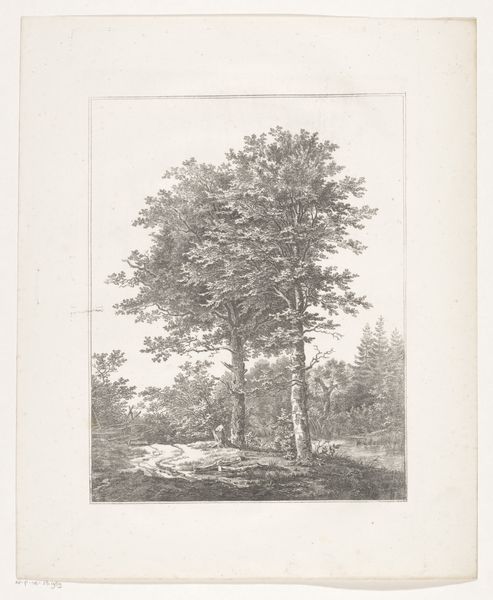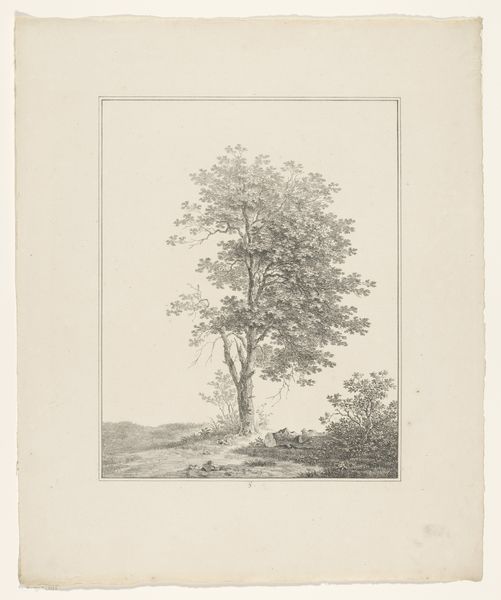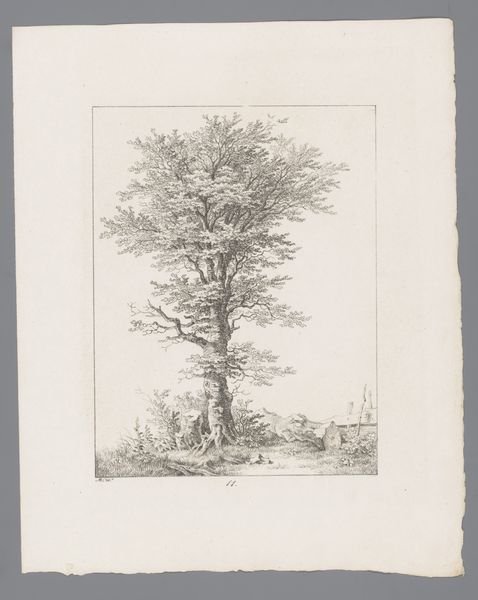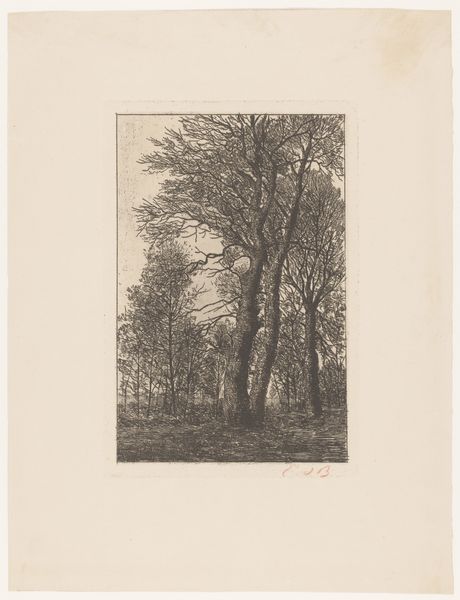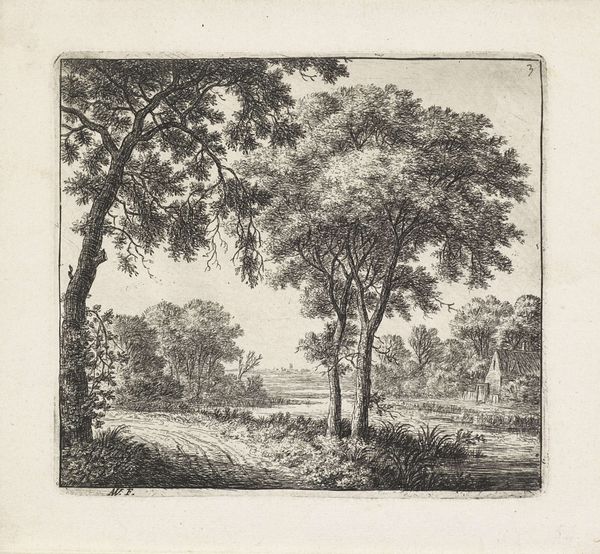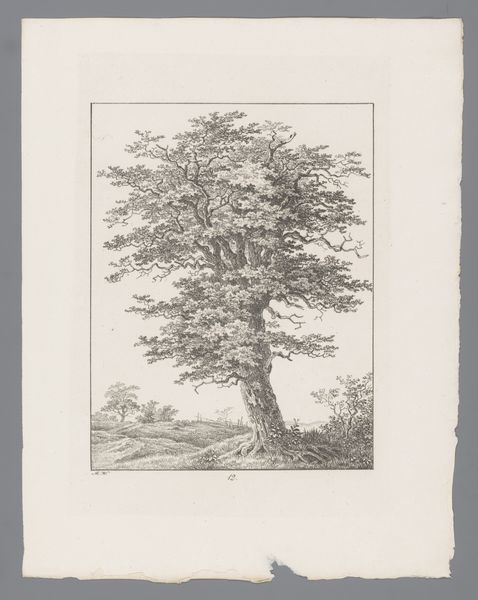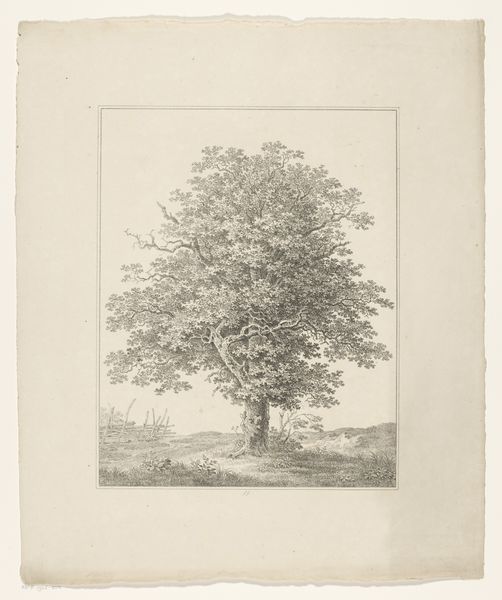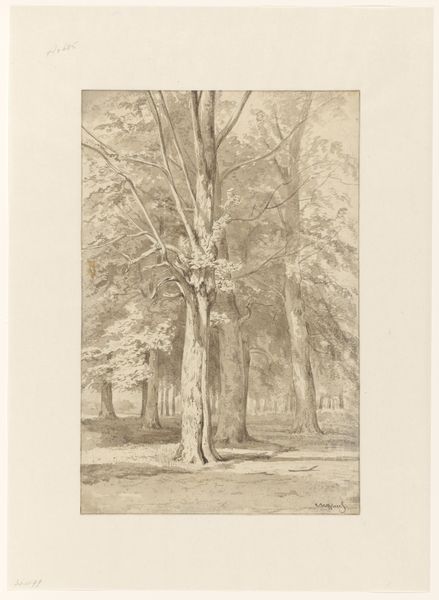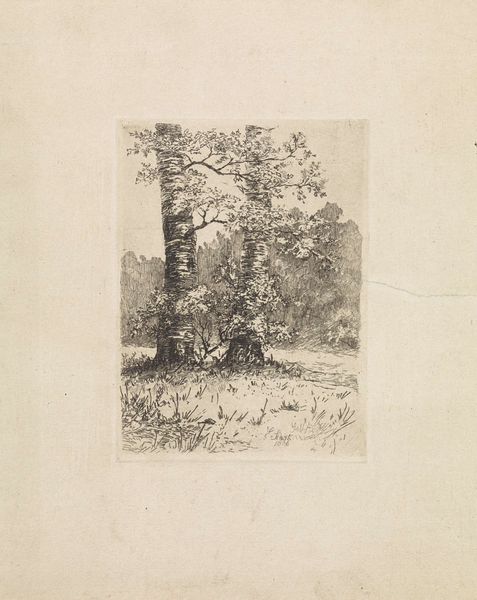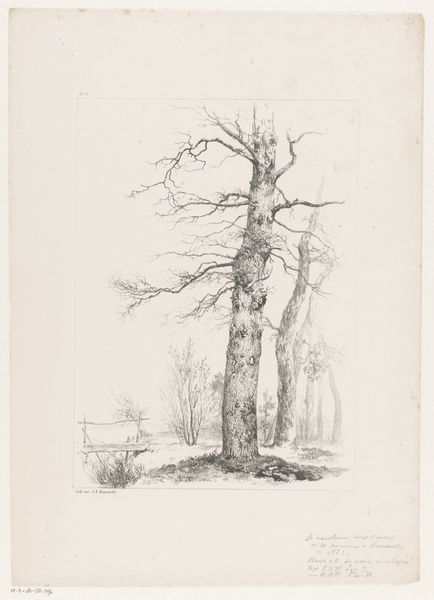
drawing, lithograph, print, paper
#
drawing
#
lithograph
# print
#
landscape
#
paper
#
romanticism
#
france
Dimensions: 214 × 130 mm (image); 306 × 231 mm (sheet)
Copyright: Public Domain
Editor: We’re looking at Louis Pierre Baltard’s "Study of Trees," from around 1817, a lithograph printed on paper. The way the light filters through the leaves gives it this very ethereal, almost dreamlike quality. What do you see in this piece? Curator: Focusing on its formal qualities, the artist demonstrates a masterful command of line and tonal variation, achieving an impressive depth with such limited resources. Consider the contrast between the bare branches and the dense foliage. The strategic placement of darker areas creates a strong visual rhythm. Editor: It’s interesting you point that out, I was thinking about the textures, how the lines almost mimic the rough bark. What does that add to the experience, technically? Curator: Precisely! The interplay of textures is crucial. The artist employs hatching and stippling to create different textures and spatial planes. Note how the lithographic process lends itself to a particularly rich velvety surface, enriching the sensory qualities of the drawing. Editor: So, the technique itself reinforces the sense of realism. I hadn’t considered how intrinsic that was to its effect! Is there anything that strikes you as particularly innovative about this work? Curator: While the subject itself – a study of trees – isn't inherently groundbreaking, the manner in which Baltard utilizes the lithographic medium reveals its untapped potential. The subtle gradations of tone are remarkably sophisticated, especially given the early stage of lithography at that time. How do you read that effect overall? Editor: It's clear how essential an eye for composition is to creating atmosphere. It feels as if the Romantic essence is woven through those lithographic textures you mentioned. Curator: Exactly. Reflecting on this study, the successful exploitation of both naturalistic rendering and atmospheric suggestion yields great satisfaction. Editor: I agree; seeing your emphasis on form has really expanded my interpretation.
Comments
No comments
Be the first to comment and join the conversation on the ultimate creative platform.
